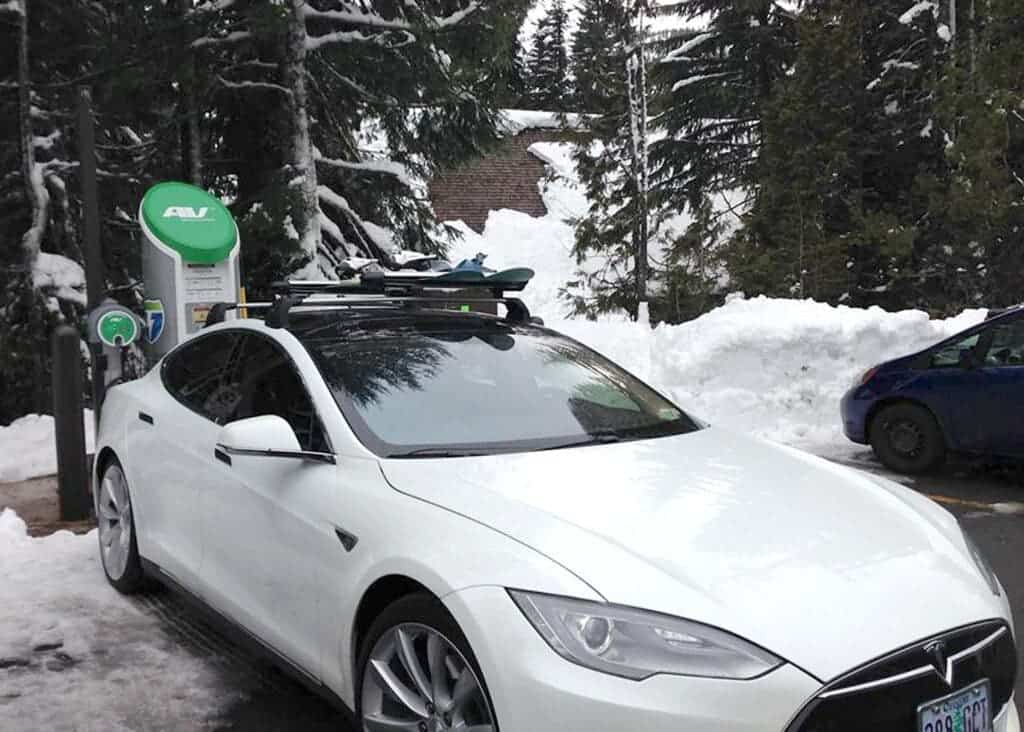
Lithium-ion batteries are a crucial invention for today’s society. Their energy density and longevity enabled the mobile technology revolution that we’ve all come to rely on — but the magic only works at room temperature. When it’s literally freezing, cellphones that are exposed to the cold too long need to be recharged more frequently and, worst of all, the range of electric cars is seriously disrupted.
People are aware of this, so many living in areas that get harsh winter (like the U.S. Midwest or Canada) have decided against purchasing an electric vehicle. All other things withstanding, many buyers would switch to electric — and thereby contribute to the decarbonization of the transportation sector that we so urgently need — if their range matched that in the warmer south or California where the winters aren’t nearly as harsh.
Their wishes may come true in the not-too-distant future. New research from Beijing Jiaotong University in China and the Chinese Academy of Sciences demonstrated a novel lithium-ion battery design, in which the typically flat graphite anode was replaced with a different bumpy carbon-based material. This crucial modification allowed the battery to main most of its rechargeable storage capacity down to -35 degrees Celsius (-31 degrees Fahrenheit).
One of the main reasons why conventional lithium-ion batteries fail in the extreme cold is owed to the flat orientation of the graphite anode. Researchers led by Xi Wang of Beijing Jiaotong University redesigned the geometry of the carbon anode to have a “Riemannian surface”, which more plainly means its surface is bumpy and more irregular rather than flat.
The anode is made of 12-sided carbon nanospheres that demonstrated excellent electric charge transfer properties during an experiment in which it was incorporated in a coin-sized battery, with lithium metal used as the cathode.
The anode remained stable during charging and discharging at temperatures between 25 degrees Celsius (77 degrees Fahrenheit) and -20 degrees Celsius (-4 degrees Fahrenheit) and maintained 85% of its room temperature energy storage capacity just below freezing. In comparison, normal batteries that use flat graphite or even carbon nanotubes for their anode held almost no electrical charge at freezing temperatures. Even at -35 degrees Celsius (-31 degrees Fahrenheit), the bumpy anode was still rechargeable and was able to discharge nearly 100% of the charge previously stored into the battery in normal conditions.
A study carried out by AAA found that turning on a car’s heater while driving through cold temperatures reduces the EVs range by as much as 40%. Even without the heater on, conventional Li-ion batteries lose range due to the effects on their charge and discharge properties described earlier during cold weather — though it should be noted that all cars, whether they run on gas or electricity, struggle in the cold.
The differences seen in this new study are tremendous and hopefully, the new anode design could breathe new life into the geographical EV markets most affected by the cold. The bumpy anode could also prove highly important in space applications, where batteries are often deemed too risky to use for most applications due to the huge temperature swings. For instance, the outside of the International Space Station can reach temperatures as high as 121 degrees Celsius (250 degrees Fahrenheit) on the sunny side and as low as -157 degrees Celsius (-250 degrees Fahrenheit) on the shady side.
The findings appeared in the journal ACS Central Science.


